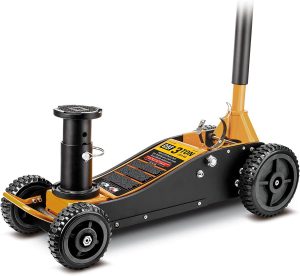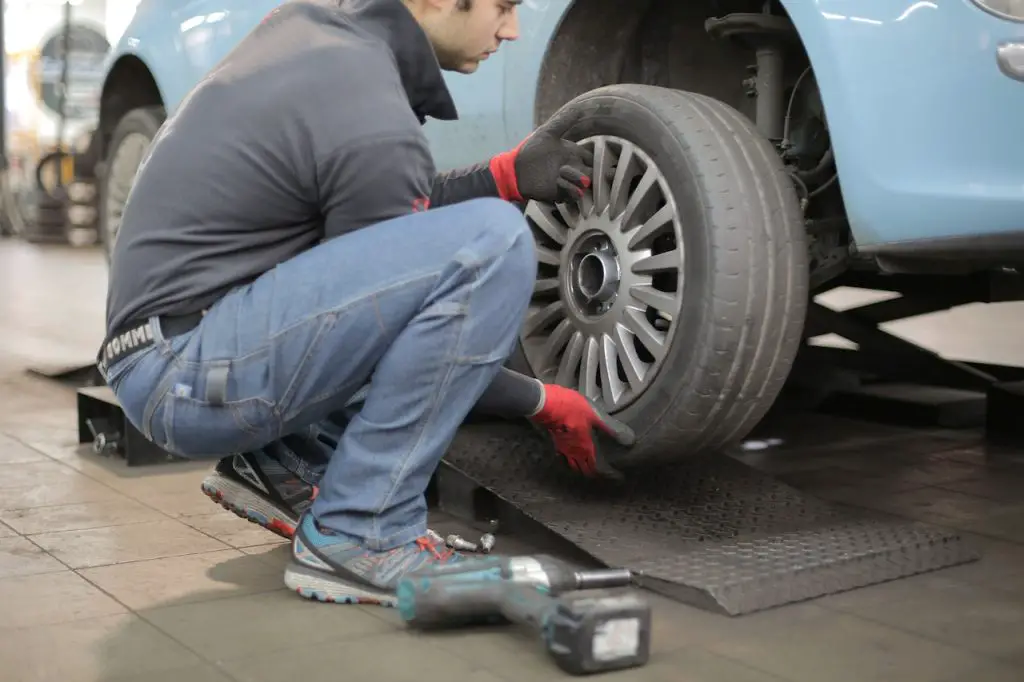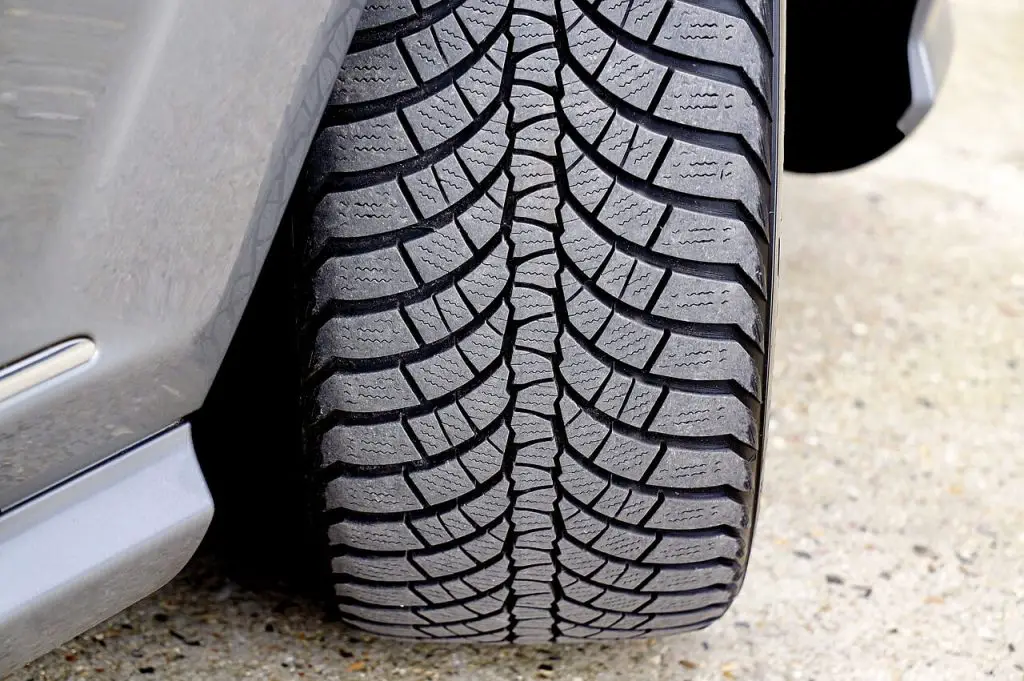Changing tires is a crucial step in preserving the condition of your car. Not only does this help you have superior control over how your ride moves on the road, but it also grants necessary grip and traction when driving in wet or icy environments. But how long does it take to change tires? It depends on several elements including your expertise level, tire accessibility, and equipment strength that you possess. Here we’ll examine precisely how long does it take to change tires as well as share techniques for saving energy with the right tools – so let’s begin!
Table of Contents
ToggleReasons for Changing Tires
When considering how much time is required to change tires, it’s essential to first ask yourself why you’re even replacing them. There could be a variety of reasons for this chore; whether you own an opulent ride, a sports car or a family vehicle, changing your wheels frequently is an integral part of keeping your automobile in top shape. It’s easy to overlook the importance of having well-maintained tires until you find yourself stranded on the side of the road with a flat. So, why exactly should you change your tires regularly? Let’s take a look at few benefits.
Improved Safety
Safety is of utmost importance when it comes to tires, and that’s why replacing them on a regular basis is so important. With worn out tires, you are more prone to failure in tough road or weather conditions which can lead to catastrophic results – loss of traction and control over your vehicle resulting in accidents. By staying up-to-date with your tire replacement schedule, you can stay safe behind the wheel without worry about potential risks from damaged tires.
Optimized Fuel Efficiency
Another benefit to changing your tires regularly is improved fuel efficiency. When treads on the tires are worn down, it takes more energy for them to turn, leading to increased fuel consumption and reduced gas mileage. Upgrading your tires can significantly enhance the performance of your vehicle by decreasing any resistance and boosting fuel economy.
Improved Handling & Comfort
Finally, switching out old tires for new ones can also improve the handling and comfort of your vehicle while driving. Newer rubber compounds make it easier for your car to grip pavement while cornering or going around curves in wet weather conditions. Additionally, new shocks installed alongside fresh rubber will help absorb bumps in the road better than older shocks combined with worn-out tires would. This combination will greatly reduce vibration caused by uneven roads and make rides smoother than ever before!
How Long Does it Take to Change Tires?
Now that we understand the reasons why you would need to change your tires, let’s investigate how quickly this process can be completed. Although it might seem intimidating if you’ve never done it before, changing your tires is actually quite simple and straightforward when armed with the correct tools. So how long does it take to take? Let’s discover!
Step 1: Preparation and safety measures
To ensure a successful experience, it is vital to be adequately prepped. Gather the following materials before you commence:
– A floor jack
– An appropriately sized lug wrench
– A newly purchased spare tire with no damage
– A flashlight (recommended but optional)
After procuring the necessary equipment, it is essential to locate a secure place for changing your tire. If you are on the roadside, attempt to move as close off of it as possible in order to stay clear from passing vehicles. On the other hand, if situated in a parking lot, consider finding a well-lit and isolated area away from any other car. Once you have detected an appropriate spot where you can change your tire safely and comfortably, switch on your hazard lights so that no one accidentally parks too near while distracted by traffic or busyness elsewhere.
Buy On Amazon
Step 2: Removing the old tire and wheel assembly from the vehicle
It’s time to begin! Start by using your lug wrench and unscrew the lug nuts before you jack up your car – it will be much trickier once it is suspended. When all of the nuts are loose, use your jack to raise the vehicle so that the flat tire comes off of its surface. Then carefully remove each nut followed by lifting away both tire and wheel assembly without damaging anything else in sight!
Step 3: Installing the new tire and wheel assembly
Now it’s time to install the new tire and wheel assembly. Aligning the wheel’s holes with your vehicle’s bolts is the first step. Then, hand-tighten each lug nut until all are securely in place. Once complete, you can use a jack to lower your car back down so that it rests on all four tires again. You should then carefully and firmly tighten each lug nut using a lug wrench – just make sure they are tight enough not to come undone while driving!
Step 4: Securing the lug nuts
The final step is to double-check that all of your lug nuts are secure by giving each one another turn with your wrench. Once they are all tight, remove your jack from under the car and put everything back in its place in your trunk or storage area. And that’s it! You’ve successfully changed a tire!
Changing tires isn’t something most people do every day, but knowing how can save you time (and money!) should you ever find yourself stranded roadside with a flat tire.
Now that we know what’s involved—loosening lug nuts, jacking up your vehicle, removing and replacing wheels—we can estimate that changing tires takes anywhere between 15 minutes and an hour, depending on experience level and difficulty accessing certain areas of your car such as reaching all of its lug nuts. With practice comes speed!
Buy on Amazon
Also Read: How Long Does it Take for a Car to Cool Down
Factors that Determine how long does changing a tire take
No matter your experience level or the difficulty of reaching certain parts of your car, it can take anywhere from 15 minutes to an hour to change a tire. As you embark on this task, there are some elements that will determine how long it takes:
Type of Vehicle
Changing a tire isn’t always the same for every vehicle, as the type of car you drive plays an important role. Generally speaking, cars with smaller tires are simpler and faster to work on than SUVs or trucks that have bigger ones. Moreover, all-wheel drive models can make changing a tire even more intricate due to their complex design.
Type of Tire
When it comes to changing a tire, the kind of tire makes all the difference. Tubeless tires don’t require an inner tube for inflation and are simpler to switch out than tube-type tires which need one. Knowing this distinction is essential since they each necessitate distinct techniques when replacing them.
Tubeless Tires
Changing a tubeless tire is drastically simpler and faster than changing tube-type tires– no inner tube is required. You simply pop off the wheel, remove the old tire, clean out any debris, then slip on your new one. It usually only requires about 15 minutes of work to complete this process; time may vary depending on lug nut tightness and the size of the wheel.
Tube-Type Tires
Changing a tubeless tire is drastically simpler and faster than changing tube-type tires– no inner tube is required. You simply pop off the wheel, remove the old tire, clean out any debris, then slip on your new one. It usually only requires about 15 minutes of work to complete this process; time may vary depending on lug nut tightness and the size of the wheel.
Skillset of Tire Changer
This one should be pretty obvious, but it’s worth mentioning anyway. If you’ve never changed a tire before, it’s going to take you longer than someone who has done it many times. Even if you have changed a tire before, it’s still going to take longer than someone who does it for a living. That’s because changing a tire is physical work, and it takes time to get good at it. The more experience you have, the faster you’ll be able to do it.
Number of Wheels
When it comes to changing a tire, the number of wheels can greatly influence how long the task will take. If you have two-wheel drive vehicle, then don’t worry – this job is simple and should be done in as little as 15 minutes.
However, if you have an all-wheel drive car, it will take considerably longer because you’ll need to jack up each wheel separately in order to remove and replace them. This process can easily take an hour or more, depending on how tight the lug nuts are and how experienced you are at changing tires.
Weather Conditions
If it’s raining, snowing or in some other way wet and chilly, then you can expect that it might take you longer than usual. But if the temperature is warmer and the air is dry, then it may be easier to change a tire with fewer hassles. It always helps to know in advance what kind of weather conditions you’re likely to encounter on your journey so that you have an idea of what to expect when changing a tire. Be sure to also plan ahead and keep a well-stocked roadside assistance kit with a tire iron, spare tire, jack, and any other necessary tools so that you’re prepared for whatever might come your way!
Availability of Tools and Equipment
Finally, how long it takes to change a tire also depends on the availability of tools and equipment. If you don’t have the right tools or materials on hand, then it won’t matter how experienced you are at changing tires – it’s still going to take longer than usual. Be sure to keep your roadside assistance kit stocked with all the necessary tools so that if you ever do get a flat, you can quickly and easily change it without any delays.
Tips and tricks for how to make changing a tire faster
To make tire-changing a breeze, here are some simple strategies to follow:
- Equip yourself with the necessary tools and supplies before you go on your journey. In order to prevent any unnecessary complications, it is essential that your roadside assistance kit includes all of the items needed for a tire change-over; after all, foresight is always better than hindsight!
- Refresh your memory on how to change a tire. If you’re inexperienced or haven’t swapped out a flat in some time, take the opportunity to learn the correct way of doing it so that when faced with an emergency, you can work swiftly and proficiently.
- Don’t over-tighten the lug nuts. When tightening the lug nuts, don’t use too much force, as this can lead to damage or warping of the rim, which will cause trouble down the road (no pun intended).
- Have a friend help out. If you have someone else who can assist, it can make the process faster and easier as there will be two people to handle the tools and materials.
- Stay safe and take your time. Changing a tire may be an inconvenience, but it’s important to stay safe when doing so by wearing protective gear and taking your time so that you don’t rush through any steps of the process, which could lead to accidents or injury.
Also Read: 8 Best Jack For Lifted Trucks
Symptoms that it’s Time to Replace Your Tires
It’s important to know how long does it take to change tires, but it’s also essential that you know when it might be time to replace your tires. Here are some of the most common signs that it’s time for new tires:
Check Your Tire Tread Depth
One of the easiest ways to determine if your tires need replacing is to check their tread depth. To do this, use a penny and put it between the grooves of the tire’s tread pattern, with Lincoln’s head pointing down into the groove. If you can see all of Lincoln’s head (or more), it’s time to get new tires.
Look For Signs of Dry Rotting
The rubber on your tires will eventually start to dry rot due to age and exposure to sunlight—and this can cause cracks and breaks in the rubber that can lead to tire failure. To check for dry rotting, inspect both sides of each tire for any visible signs of cracking or splitting. If you see any cracks or splits that are more than 1/8-inch wide, it’s time for new tires.
Pay Attention To Uneven Wear
Uneven wear is another sign that it may be time for new tires—especially if one side is wearing faster than the other side or if there is excessive wear in certain areas of the tire treads compared to others. Uneven wear can be caused by underinflated or overinflated tires as well as misaligned wheels or worn suspension components like shocks and struts. In any case, make sure you have each tire inspected by a professional so they can identify the underlying cause and recommend an appropriate solution, such as replacing your tires or getting an alignment service done.
Vibration While Driving
If you feel a vibration while driving, this could also be an indication that one or more of your tires may need to be replaced. Vibrations can often occur when one or more tires are not properly balanced and can indicate that they have worn unevenly due to a lack of rotation or alignment services. If left unchecked, these problems can worsen over time and eventually lead to an unsafe driving situation.
Frequently Asked Questions
What is the Cost of a Tire Change?
The cost of a tire change can vary depending on the type of tires you are changing and the labor involved. Generally, a standard tire change will cost anywhere from $50-$100. Some shops may charge more for premium or specialty tires if those are needed, so be sure to ask how much the shop charges beforehand.
How Often Should I Change My Tires?
Typically, the best practice is to change your tires every 5-7 years—or sooner if you notice any of the signs mentioned above. It’s also important to rotate your tires regularly (every 3-6 months or 6,000-8,000 miles), as this will help extend the life of your tires and ensure even wear over time.
Is it possible for Tires to Burst from the Heat?
Yes, it is possible for tires to burst from the heat. Heat buildup can cause the air pressure inside your tire to increase, which can eventually lead to a blowout if the pressure gets too high. To prevent this from happening, make sure to keep your tires inflated properly and check them regularly for any signs of wear or unevenness.
Is Wheel Alignment Essential After Installing New Tires?
Yes, wheel alignment is essential after installing new tires. Doing a wheel alignment on your vehicle will ensure that the wheels are all pointing in the same direction and help extend the life of your new tires. If you have recently installed new tires, it’s best to get a wheel alignment done as soon as possible.
Conclusion
Maintaining your vehicle through tire changes is essential and should never be overlooked. A simple tire inspection and timely replacement can not only prolong their lifespan, but also save you considerable money in the long run. Changing a tire usually takes around 30 minutes with someone experienced at it; however, if you’re uncertain of how to do this job yourself, then let an expert do it instead -this will ensure your safety on roads while guaranteeing a comfortable ride.











